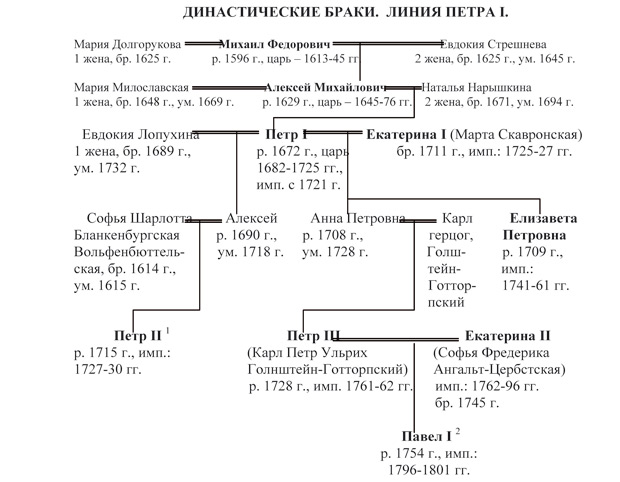Dynasty of the Romanovs: years of government. All the Russian tsars of the Romanov dynasty. Great patron of the Renaissance. U he diva 1 1 1 keygen crack mac torrent. Lorenzo de 'Medici.
Contents • • • • • • • • • • • • • • • • • • • • • • • Surname usage [ ] Legally, it remains unclear whether any ever abolished the surname of Michael Romanov (or of his subsequent male-line descendants) after his accession to the Russian throne in 1613, although by tradition members of reigning dynasties seldom use surnames, being known instead by dynastic titles ('Tsarevich Ivan Alexeevich', 'Grand Duke Nikolai Nikolaevich', etc.). From January 1762 [ December 1761], the monarchs of the claimed the throne as relatives of (1708-1728), who had married. Thus they were no longer Romanovs by, belonging instead to the Holstein-Gottorp of the German that reigned in Denmark. The 1944 edition of the records the name of Russia's ruling dynasty from the time of Peter III (reigned 1761-1762) as 'Holstein-Gottorp-Romanov'. However, the terms 'Romanov' and 'House of Romanov' often occurred in official references to the Russian imperial family.

The coat-of-arms of the Romanov was included in legislation on the imperial dynasty, and in a 1913, Russia officially celebrated the '300th Anniversary of the Romanovs' rule'. After the February Revolution of March 1917, a special decree of the granted all members of the imperial family the surname 'Romanov'. [ ] The only exceptions, the descendants of the (1891-1942), took (in exile) the surname. House of Romanov [ ]. A 16th-century residence of the Yuryev-Zakharyin boyars in, near The Romanovs share their origin with two dozen other Russian noble families.
Their earliest common ancestor is one, attested around 1347 as a in the service of. Later generations assigned to Kobyla an illustrious. An 18th-century claimed that he was the son of the prince Glanda Kambila, who came to Russia in the second half of the 13th century, fleeing the invading.
Indeed, one of the leaders of the rebellion of 1260–1274 against the was named Glande. This legendary version of the Romanov's origin is contested by a more plausible version of their descent from a boyar family from Novgorod. His actual origin may have been less spectacular. Not only is Kobyla Russian for ', some of his relatives also had as nicknames the terms for horses and other domestic animals, thus suggesting descent from one of the. [ ] One of Kobyla's sons,, a member of the boyar of, was nicknamed Koshka ('cat').

His descendants took the surname Koshkin, then changed it to Zakharin, which family later split into two branches: Zakharin-Yakovlev and Zakharin-Yuriev. During the reign of, the former family became known as Yakovlev ( among them), whereas grandchildren of [] changed their name to 'Romanov'. Rise to power [ ] The family fortunes soared when Roman's daughter,, married (the Terrible), the Grand Prince of Moscow, on 3 (13) February 1547. Since her husband had assumed the title of, which literally means ', on 16 January 1547, she was crowned the very first of Russia. Her mysterious death in 1560 changed Ivan's character for the worse. Suspecting the boyars of having poisoned his beloved, Tsar Ivan started a against them. Among his children by Anastasia, the elder (Ivan) was murdered by the tsar in a quarrel; the younger, a pious but lethargic prince, inherited the throne upon his father's death in 1584.
A crowd at the imploring Mikhail Romanov's mother to let him go to Moscow and become their tsar ( from a book dated 1673). Throughout Feodor's reign (1584–1598), the Tsar's brother-in-law,, and his Romanov cousins contested the de facto rule of Russia. Upon the death of childless Feodor, the 700-year-old line of came to an end. After a long struggle, the party of Boris Godunov prevailed over the Romanovs, and the elected Godunov as tsar in 1599.
Godunov's revenge on the Romanovs was terrible: all the family and its relations were deported to remote corners of the Russian North and, where most of them died of hunger or in chains. The family's leader,, was exiled to the and forced to take monastic vows with the name. The Romanovs' fortunes again changed dramatically with the fall of the Godunov dynasty in June 1605. As a former leader of the anti-Godunov party and cousin of the last legitimate tsar, Filaret Romanov's recognition was sought by several who attempted to claim the Rurikid legacy and throne during the. Made him a, and raised him to the dignity of.
Upon the expulsion of the from Moscow in 1612, the Zemsky Sobor offered the Russian crown to several Rurikid and princes, but all declined the honour. On being offered the Russian crown, Filaret's 16-year-old son, then living at the of, burst into tears of fear and despair. He was finally persuaded to accept the throne by his mother, who blessed him with the holy image of. Feeling how insecure his throne was, Mikhail attempted to emphasize his ties with the last Rurikid tsars and sought advice from the Zemsky Sobor on every important issue. This strategy proved successful.